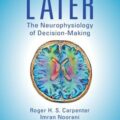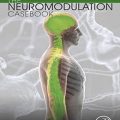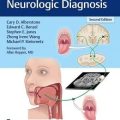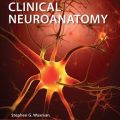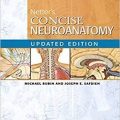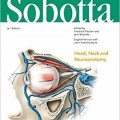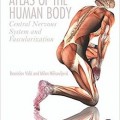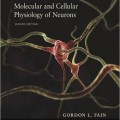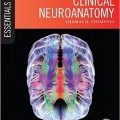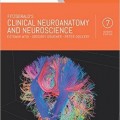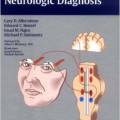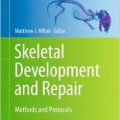دانلود کتاب فیزیولوژی اعصاب سلولی و مولکولی هاموند
Cellular and Molecular Neurophysiology, 4ed
This new, thoroughly revised fourth edition is the only current, established and authoritative text focusing on the cellular and molecular physiology of nerve cells. Understanding the functioning of the neuron, the basic cell of the central nervous system requires a clear understanding of the cellular and molecular physiology of the neuron. The book is hypothesis driven rather than just presenting the facts, and the content is firmly based on numerous experiments performed by the top experts in the field. While the book does cover the important facts, it also presents the background for how researchers arrived at this knowledge to provide a context for the field. It teaches not only how excitable cells work in detail, but also how to construct and conduct intelligent research experiments. This book promotes a real understanding of the function of nerve cells that is useful for practicing neurophysiologists and students in a graduate-level course on the topic alike.
- ۷۰% new or updated material in full color throughout, with more than 350 carefully selected and constructed illustrations
- Fifteen appendices describing neurobiological techniques are interspersed in the text
- Accompanying Instructor website with exercises and Companion website available
Review
“This is an excellent work on the cellular and molecular physiology of nerve cells. I would highly recommend it for universities, neuroscience libraries, and physiology departments. Score: 100 – 5 Stars”–Doody’s, Cellular and Molecular Neurophysiology, Fourth Edition
Reviews for the previous edition:
“In its third internationally acclaimed edition, this textbook provides an unrivaled account of the basic foundations of molecular and cellular neurophysiology. For those of us who were inclined to believe that the unprecedented development of neuroscience made neurophysiology disposable, Constance Hammond proves us with conviction and elegance that this is just not the case!”–Dr. Robert Dantzer, Professor of Psychoneuroimmunology, Integrative Immunology and Behavior Program University of Illinois at Urbana-Champaign “More than any similar volume that I have come across in recent years, this one has the potential of luring students of neuroscience and even students from other fields to build a career in neurophysiology.”–György Buzsáki, M.D., Ph.D., Board of Governors Professor, Center for Molecular and Behavioral Neuroscience, Rutgers University
From the Back Cover
This new, thoroughly revised fourth edition is the only current, established and authoritative text focusing on the cellular and molecular physiology of nerve cells. Understanding the functioning of the neuron, the basic cell of the central nervous system requires a clear understanding of the cellular and molecular physiology of the neuron. The book is hypothesis driven rather than just presenting the facts, and the content is firmly based on numerous experiments performed by the top experts in the field. While the book does cover the important facts, it also presents the background for how researchers arrived at this knowledge to provide a context for the field. It teaches not only how excitable cells work in detail, but also how to construct and conduct intelligent research experiments. This book promotes a real understanding of the function of nerve cells that is useful for practicing neurophysiologists and students in a graduate-level course on the topic alike.
Contents
Part I. Neurons: Excitable and Secretory Cells that Establish Synapses
۱. Neurons – Constance Hammond
۲. Neuron – Glial Cell Cooperation – Constance Hammond, Myrian Cayre, Aude Panatier and Elena Avignone
۳. Ionic Gradients, Membrane Potential and Ionic Currents – Constance Hammond
۴. The Voltage-Gated Channels of Na+ Action Potentials – Constance Hammond
۵. The Voltage-Gated Channels of Ca+2Action Potentials: Generalization – Constance Hammond and Francois Michel
۶. The Chemical Synapses – Constance Hammond and Monique Esclapez
۷. Neurotransmitter Release – Constance Hammond, Oussama El Far and Michael Seagar
Part II. Ionotropic and Metabotropic Receptors in Synaptic Transmission and Sensory Transduction
۸. The Ionotropic Nicotinic Acetycholine Receptors – Constance Hammond
۹. The Ionotropic GABAA Receptor – Constance Hammond and Roustem Khazipov
۱۰. The Ionotropic Glutamate Receptors – Constance Hammond
۱۱. The Metabotropic GABAB Receptors – David Mott
۱۲. The Metabotropic Glutamate Receptors – Laurent Fagni and Jean Philippe Pin
Part III. Somato-Dendritic Processing and Plasticity of Postsynaptic Potentials
۱۳. Somato-dendritic processing of postsynaptic potentials I: Passive properties of dendrites – Constance Hammond
۱۴. Subliminal Voltage-Gated Currents of the Somato-Dendritic Membrane – Constance Hammond and Laurent Aniksztejn
۱۵. Somato-Dendritic Processing of Postsynaptic Potentials II: Role of Subthreshold Depolarizing Voltage-Gated Currents – Constance Hammond, Jean-Marc Goaillard and Dominique Debanne
۱۶. Somato-Dendritic Processing of Postsynaptic Potentials III: Role of High Voltage-Activated Depolarizing Currents – Constance Hammond, Jean-Marc Goaillard and Dominique Debanne
۱۷. Firing Patterns of Neurons – Constance Hammond
۱۸. Synaptic Plasticity – Constance Hammond, Jean-Marc Goaillard, Dominique Debanne and Jean-Luc Gaiarsa
Part IV. The Adult Hippocampal Network
۱۹. The Adult Hippocampal network – Constance Hammond
۲۰. Maturation of the Hippocampal Network – Yehezkel Ben Ari
لینک کوتاه : https://bookbaz.ir/?p=16244
نویسنده : Constance Hammond
ناشر : Academic Press; 4 edition
سال انتشار : 2015
زبان کتاب : انگلیسی
نوع فایل : PDF
تعداد صفحات : 444
(ISBN) شابک : 0123970326
قیمت کتاب درآمازون : $128.13
حجم فایل : 102 MB














